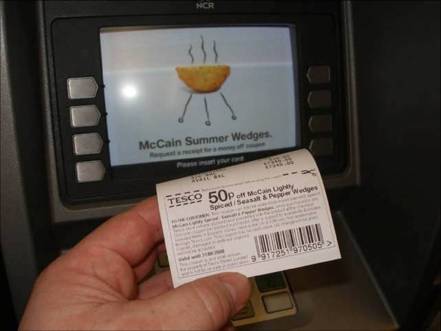 Had a dispiriting SEO moment this morning. I was at a seminar organised by a company peddling an IP lookup / website analytics mashup (something I really see value in and would recommend you have a look at).
Had a dispiriting SEO moment this morning. I was at a seminar organised by a company peddling an IP lookup / website analytics mashup (something I really see value in and would recommend you have a look at).
Their guest speaker was a major digital player at a HUGE multinational B2B. To save her blushes, I’ll not alert their monitoring tools by saying the companies real name – but it rhymes with ITN and they do clever TV adverts. You with me?
Anyway, Ms X was very keen to state she had a budget of hundreds of thousands a year and delivered many millions in product sales. I believe she even said “I’m the person with the money” and “when I call people my phone calls get answered“. Good for you love.
What got my goat was her assertion that each reseller of her product has to undergo a “website health check” from an independent auditor. The purpose of this was to establish the site’s positioning in SERPs and whether it was a usability nightmare. Apparently these cost £200, and “you should be careful because there are some real cowboys out there” who might charge more.
a) “website health check”?? frak me, its 2009, not 1995. A website isn’t a person with swine flu, its a tool. When you’re talking to a room full of marketers you shouldn’t be afraid to say “we perform a site audit, focussing on visibility to search engines and usability.” If a marketer doesn’t know about SEO, conversion rate, and/or PPC advertising in todays online world, they’re deadwood. Lets leave the comparisons between a website and a person in the past eh?
b) The cost. If you want a site comprehensively auditted, especially when you’re expecting it to sell a good proportion of £x million in software, spending £200 is like taking a plastic fork to a gunfight. In order to understand whether a website of that importance is “healthy” (I’ll stick with this terrible phrase for now) you need to:
- know how you rank for many, many keywords
- do keyword research
- understand your audiences browsing habits
- be investing a lot of time in analytics.
All of these things require tools and human resource – good human resource at that. £200 gets you nowhere. Anyone who says it does is working for free or doing you a vast disservice.
Major b2b players need to be investing in good quality training for people in positions with large amounts of digital budget, otherwise performance will only improve in small increments.
In addition, the practice of promoting based on experience doesn’t particularly hold up for in-house marketing nowadays – if you want to succeed online DON’T just promote people who have spent years in traditional media – traditional methodologies don’t transfer well to the digital realm more often than not. People who are literate in the web, with a passion for understanding and a conditioning for what works and what doesn’t online are the real key to success and innovative marketing strategies.
So if you think your website needs a £200 website health check to make sure its fit for purpose, I have news for you… its dying of neglect already.


 Had a dispiriting SEO moment this morning. I was at a seminar organised by a company peddling an IP lookup / website analytics mashup (something I really see value in and would recommend you have a look at).
Had a dispiriting SEO moment this morning. I was at a seminar organised by a company peddling an IP lookup / website analytics mashup (something I really see value in and would recommend you have a look at).

 I really like Spotify, more so than Last FM, and its cool too see a new, legal music channel take off so rapidly. Anyone who uses Spotify will know that the service is free as long as you are happy to listen to one ad (although now this is frequently 2) every 5 – 6 songs or so. Also employed are banner ads within the UI.
I really like Spotify, more so than Last FM, and its cool too see a new, legal music channel take off so rapidly. Anyone who uses Spotify will know that the service is free as long as you are happy to listen to one ad (although now this is frequently 2) every 5 – 6 songs or so. Also employed are banner ads within the UI.